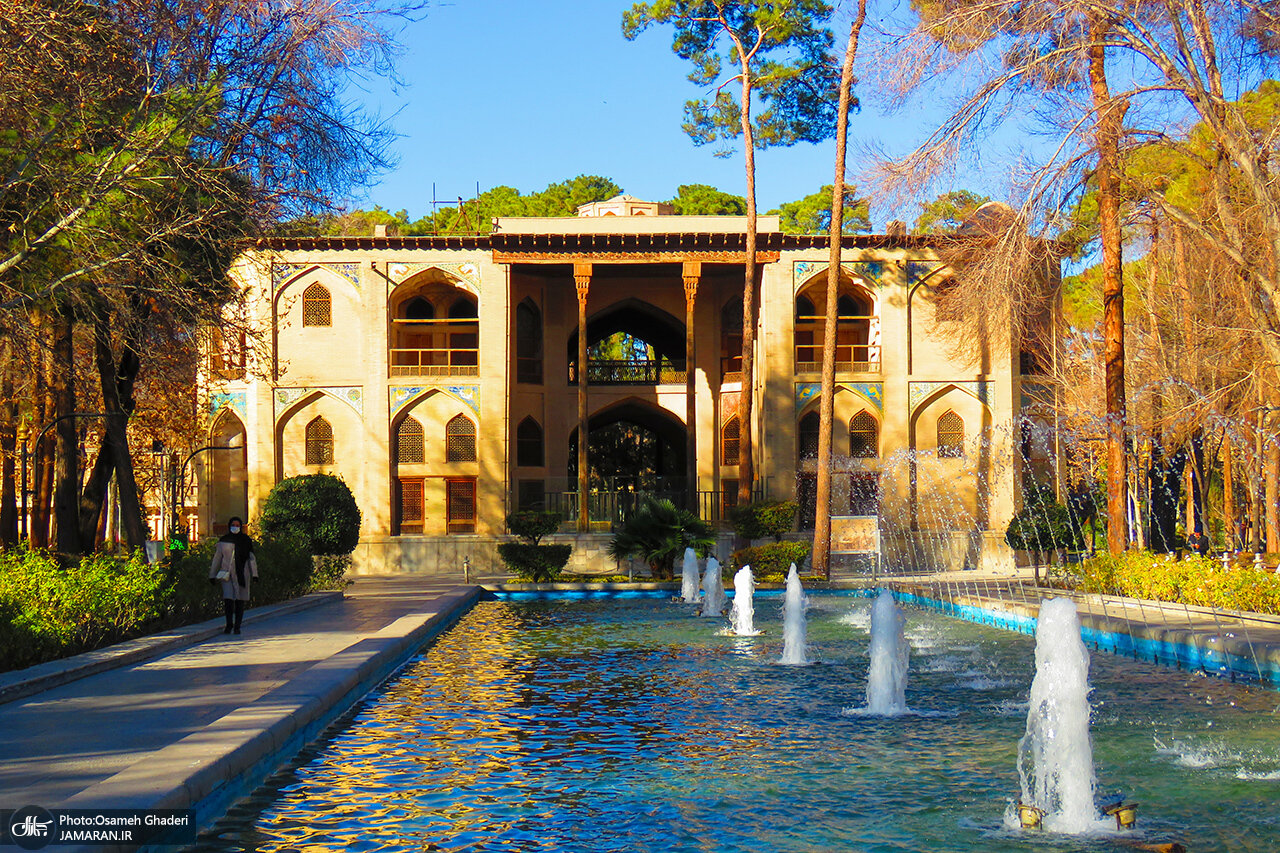Hasht Behesht a jewel of Safavid architecture in Isfahan
Hasht Behesht: a jewel of Safavid architecture in Isfahan
TEHRAN – Standing tall in the heart of Isfahan, Hasht Behesht (“Eight Paradises”) is a must-see historic mansion and a captivating reminder of Iran’s Safavid era.

Constructed in the second half of the 17th century, by the order of Shah Ismail I, this enchanting palace sits within a lush garden, itself part of the larger Naghsh-e Jahan garden complex.
Known in its time as one of the most beautiful palaces in the world, Hasht Behesht draws visitors today with its remarkable architecture, intricate design, and serene ambiance.
The palace is an octagonal masterpiece, featuring four distinct facades, each with unique details. Raised two meters above the garden, Hasht Behesht has two floors, with stairways on each side leading to the upper level.
The rooms on the first floor are exquisitely adorned with stucco, colorful paintings, and delicate details that reflect the rich artistic heritage of the Safavid period.
One of the palace’s most striking features is the octagonal marble pool at the center of the main hall, known as the Pearl Pool. Ingeniously carved, the pool’s design allows water to flow gently through its holes, creating a mesmerizing effect reminiscent of pearls cascading across its surface.
Surrounded by a beautiful park that is now one of Isfahan’s most popular promenades, Hasht Behesht is a serene and luxurious space for visitors to enjoy. A visit to this palace offers an unforgettable glimpse into the grandeur of Safavid architecture and the tranquil beauty of Persian gardens.
The Persian proverb “Isfahan nesf-e-jahan ast” (Isfahan is half the world) reflects the city’s cultural and historical prominence.
Situated at the crossroads of Iran’s north-south and east-west trade routes, Isfahan reached its zenith between the 9th and 18th centuries. During the Safavid era, it became Iran’s capital under Shah Abbas the Great.
Moreover, the ancient city was once a crossroads of international trade and diplomacy in Iran and now it is one of Iran’s top tourist destinations for good reasons. It is filled with many architectural wonders, such as unmatched Islamic buildings, bazaars, museums, Persian gardens, and tree-lined boulevards. It’s a city for walking, getting lost in its mazing bazaars, dozing in beautiful gardens, and meeting people.
AM
source: tehrantimes.com